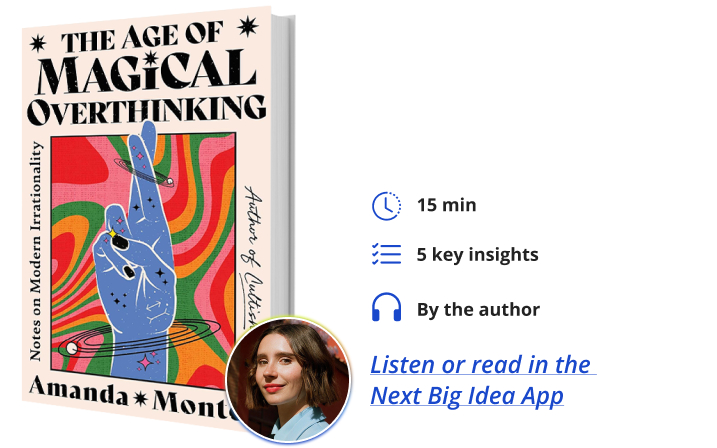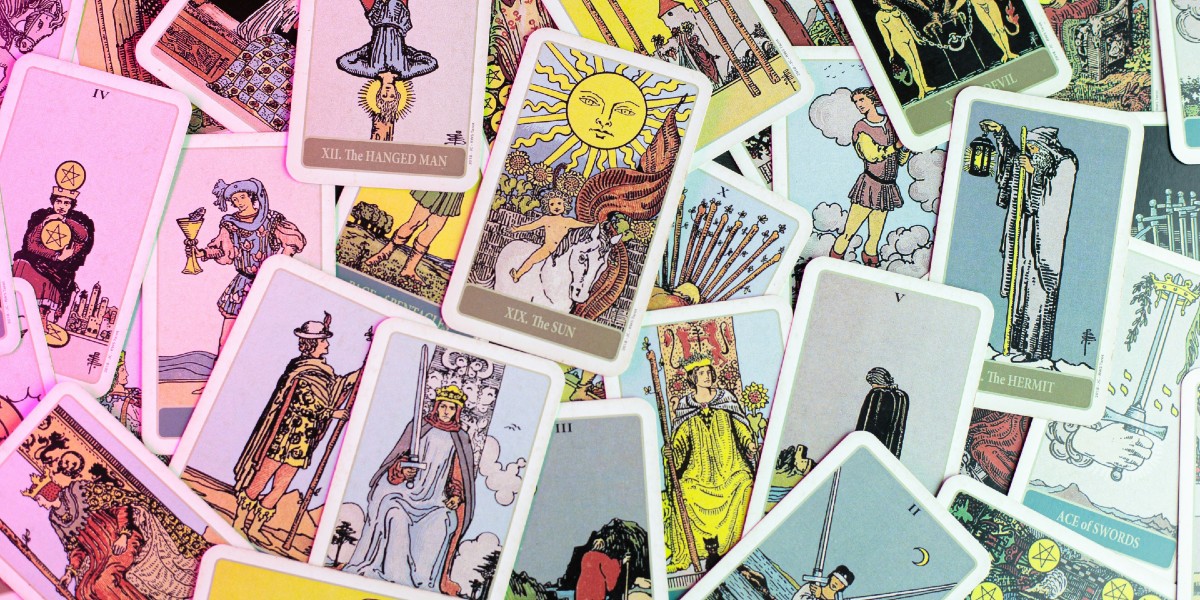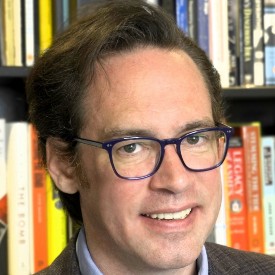Amanda Montell is a writer, linguist, and podcast host. She is the author of Wordslut and the bestseller Cultish and host of the podcast Sounds Like a Cult. Her writing has also appeared in The New York Times, Marie Claire, Cosmopolitan, and more. She holds a degree in linguistics from NYU.
Below, Amanda shares five key insights from her new book, The Age of Magical Overthinking: Notes on Modern Irrationality. Listen to the audio version—read by Amanda herself—in the Next Big Idea App.

1. The human mind is inherently clashing with the Information Age.
Why does living in the so-called Information Age only seem to make life more confusing? Why does this particular time in history seem to be colliding so violently with the human spirit? It’s no secret that we’re living through an unprecedented mental health crisis: we’re isolated, languishing, burnt out on screens, losing faith in everyone’s humanity, overthinking ourselves to death, putting our faith in TikTok astrologers, larger-than-life celebrities, blacking out on nostalgic chimeras of the past, cozying up to conspiracy theories.
In 2021, a CDC survey found that 42 percent of young people felt so sad or hopeless in the last two weeks that they couldn’t go about their normal days. The National Alliance on Mental Illness reported that between 2020 and 2021, crisis calls to their lifeline were up 251 percent.
The mental anguish is enough to make us think everyone has turned evil and the world is ending once and for all. But as it turns out, much of the unease can be explained by cognitive biases—the mental magic tricks we play on ourselves. Like Mentos and Diet Coke, our innate mysticisms and the Information Age have combined explosively. Capitalism, data overload, and competitive pressure to know everything under the sun have clashed with our irrational nature to create a violently delusional era.
2. Cognitive biases are a useful lens to understand other people’s bizarre behaviors (and our own).
Cognitive biases are psychological shortcuts we take both automatically and unconsciously. They are deep-rooted and sometimes ancient. They underlie so many of the mysterious, nonsensical choices we see people making these days—from my neighbor opting not to get vaccinated because a YouTuber in palazzo pants said it would “downgrade her DNA,” to my commitment in my early 20s to stick out a romantic relationship that I knew caused me suffering.
“Each different cognitive bias can be used as a lens to examine some confounding irrationality within ourselves.”
From the sunk cost fallacy to the halo effect to “the Ikea effect,” each bias is an illusion that allows us to maximize our limited time, mental capabilities, and desire for meaning. The trouble is that they dominate our decision-making so naturally that we don’t notice how counterproductive many of them have become. Each different cognitive bias can be used as a lens to examine some confounding irrationality within ourselves. Developing an awareness of our cognitive biases is a way to have more compassion toward others’ irrationalities and skepticism of our own. It might be the only way to survive this age.
3. Science literacy doesn’t make us better at discerning facts.
Here’s a perfect example of how more information doesn’t exactly help the world make more sense: A 2011 Yale experiment on climate change perceptions concluded that becoming more scientifically literate actually made study subjects less willing to entertain views they didn’t agree with. Why? Additional information just made them better at defending their existing beliefs. “Cultural polarization actually gets bigger, not smaller as science literacy and numeracy increase,” concluded the study’s authors. “As ordinary members of the public learn more about science . . . they become more skillful in seeking out and making sense of—or if necessary explaining away—empirical evidence relating to their groups’ positions.”
This is an example of confirmation bias on steroids. During socio-politically fraught times like election years, it becomes especially important to recognize it. Using facts to try and force other people’s minds to change is not always, as a behavioral economist might say, a rational use of one’s limited time and cognitive resources. We do, however, actually have pretty good luck changing our own minds. A 2021 study published in Philosophical Transactions of the Royal Society found that when people trained themselves to notice their own thought processes, they were able to strengthen their defenses against misinformation and dogma.
4. Celebrity worship is one of the ways delusion has gone mainstream.
During this era of mass loneliness and loss of identity, young people are increasingly investing in parasocial relationships with celebrities, whom they worship not just as entertainers but as saviors.
In 2019, a Japanese study found that about 30 percent of adolescents aspire to emulate a media figure, like their favorite singer or athlete. A 2021 study published in the North American Journal of Psychology measured that celebrity worship had increased dramatically since two decades prior. A 2014 clinical examination concluded that high levels of celebrity worship are associated with psychological difficulties, including “concerns about body image . . . greater proneness to cosmetic surgery, sensation-seeking, cognitive rigidity, identity diffusion, and poor interpersonal boundaries.” Among other observed struggles were depression, anxiety, dissociation, narcissistic personality tendencies, thirst for fame, compulsive shopping and gambling, stalking behavior, excessive fantasizing to the point of social dysfunction), addiction, and criminality.
“Young people are increasingly investing in parasocial relationships with celebrities, whom they worship not just as entertainers but as saviors.”
It’s not unhealthy to admire a celebrity, but when people lack “positive stressors” from their real lives and communities, they can lose themselves in relationships that aren’t real. This intensity is responsible for the extreme cycles of celebrity worship and dethronement we see in pop culture, especially with regard to female stars. These concepts are found in the context of the “halo effect,” the unconscious tendency to make positive assumptions about a person’s overall character based on our impressions of one single trait.
5. Understanding “magical overthinking” can soothe our mental malaise.
Classic “magical thinking” is broadly defined by the belief that one’s internal thoughts can affect external events. In moments of uncertainty, from the sudden death of a loved one to a worldwide pandemic, otherwise “reasonable” brains start to buckle. Whether it’s the conviction that one can “manifest” their way out of financial hardship, thwart the apocalypse by learning to can their own peaches, stave off cancer with positive vibes, or transform an abusive relationship into a glorious one with hope alone, magical thinking works in service of restoring agency.
While magical thinking is an age-old habit, overthinking feels distinct to the modern era. Faced with a sudden glut of information, cognitive biases cause the modern mind to overthink and underthink the wrong things. We obsess unproductively over the same paranoias, but we blitz past complex deliberations that deserve more care. I have more than once experienced the disorientation of engaging in some battle of wits online, only to come up for air and feel in my body like I’d been using sparring tactics better suited to a neolithic predator than a theoretical conversation.
I’ve been referring to this era, when we’re so swiftly outpacing the psychological illusions that once served us, as the “Age of Magical Overthinking.” For me, having a label and a lens for these relatable experiences has been enormously validating. It can feel exhausting just to exist as a human in the world right now, but that’s not a personal problem. It’s because, in this ever-restless age, so many of us have become “magical overthinkers.”
To listen to the audio version read by author Amanda Montell, download the Next Big Idea App today:






























